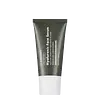What's inside
What's inside
 Key Ingredients
Key Ingredients

 Benefits
Benefits

 Concerns
Concerns

 Ingredients Side-by-side
Ingredients Side-by-side

Water
Skin ConditioningBetaine
HumectantCarbomer
Emulsion StabilisingPhenoxyethanol
PreservativePolyglyceryl-4 Caprate
EmulsifyingPolyglyceryl-6 Caprylate
EmulsifyingGlycogen
HumectantTocopherol
AntioxidantSodium Hydroxide
BufferingParfum
MaskingBenzoic Acid
MaskingArginine
MaskingCaffeine
Skin ConditioningDehydroacetic Acid
PreservativeChondrus Crispus Extract
Skin ConditioningEchinacea Purpurea Extract
MoisturisingLinalool
PerfumingBulnesia Sarmientoi Wood Oil
MaskingSodium Hyaluronate
HumectantBenzyl Salicylate
PerfumingHexyl Cinnamal
PerfumingAbies Sibirica Oil
MaskingArtemisia Herba-Alba Oil
MaskingCedrus Atlantica Bark Oil
MaskingCitrus Aurantifolia Oil
CleansingEucalyptus Globulus Leaf Oil
PerfumingLavandula Hybrida Oil
EmollientOriganum Majorana Herb Oil
PerfumingRosmarinus Officinalis Leaf Oil
MaskingCoumarin
PerfumingGluconolactone
Skin ConditioningLimonene
PerfumingAlpha-Isomethyl Ionone
PerfumingAbies Balsamea Extract
PerfumingJuniperus Communis Fruit Oil
MaskingPiper Nigrum Fruit Oil
MaskingSodium Benzoate
MaskingThymus Vulgaris Flower/Leaf Oil
MaskingEthylhexylglycerin
Skin ConditioningWater, Betaine, Carbomer, Phenoxyethanol, Polyglyceryl-4 Caprate, Polyglyceryl-6 Caprylate, Glycogen, Tocopherol, Sodium Hydroxide, Parfum, Benzoic Acid, Arginine, Caffeine, Dehydroacetic Acid, Chondrus Crispus Extract, Echinacea Purpurea Extract, Linalool, Bulnesia Sarmientoi Wood Oil, Sodium Hyaluronate, Benzyl Salicylate, Hexyl Cinnamal, Abies Sibirica Oil, Artemisia Herba-Alba Oil, Cedrus Atlantica Bark Oil, Citrus Aurantifolia Oil, Eucalyptus Globulus Leaf Oil, Lavandula Hybrida Oil, Origanum Majorana Herb Oil, Rosmarinus Officinalis Leaf Oil, Coumarin, Gluconolactone, Limonene, Alpha-Isomethyl Ionone, Abies Balsamea Extract, Juniperus Communis Fruit Oil, Piper Nigrum Fruit Oil, Sodium Benzoate, Thymus Vulgaris Flower/Leaf Oil, Ethylhexylglycerin
Water
Skin ConditioningEthylhexyl Palmitate
EmollientCaprylic/Capric Triglyceride
MaskingGlycerin
HumectantSorbitan Stearate
EmulsifyingSodium Polyacrylate
AbsorbentPentaerythrityl Distearate
EmulsifyingPhenoxyethanol
PreservativeSodium Stearoyl Glutamate
CleansingBenzoic Acid
MaskingCarbomer
Emulsion StabilisingDehydroacetic Acid
PreservativeEthylhexylglycerin
Skin ConditioningEpilobium Angustifolium Flower/Leaf/Stem Extract
Skin ConditioningCitric Acid
BufferingSodium Metabisulfite
AntioxidantSodium Hydroxide
BufferingWater, Ethylhexyl Palmitate, Caprylic/Capric Triglyceride, Glycerin, Sorbitan Stearate, Sodium Polyacrylate, Pentaerythrityl Distearate, Phenoxyethanol, Sodium Stearoyl Glutamate, Benzoic Acid, Carbomer, Dehydroacetic Acid, Ethylhexylglycerin, Epilobium Angustifolium Flower/Leaf/Stem Extract, Citric Acid, Sodium Metabisulfite, Sodium Hydroxide
Ingredients Explained
These ingredients are found in both products.
Ingredients higher up in an ingredient list are typically present in a larger amount.
Benzoic Acid is used to preserve and adjust the pH of products.
The antimicrobial property of Benzoic Acid helps elongate a product's shelf life. Its main role is to reduce fungi growth and is not found to be effective at fighting bacteria. Therefore Benzoic Acid is always added along with other preservatives.
In its pure form, Benzoic Acid looks like a white crystalline solid. It has slight solubility in water.
The name of Benzoic Acid comes from gum benzoin, which used to be the sole source of deriving this ingredient. Benzoic Acid is the most simple aromatic carboxylic acid.
Benzoic Acid is naturally occuring in strawberries, mustard, cinnamon, and cloves. It has a slight scent but is not considered to be a fragrance.
Learn more about Benzoic AcidCarbomer is a polymer of acrylic acid. Its main role is to create a gel consistency.
A high amount of carbomer can cause pilling or balling up of products. Don't worry, most products contain 1% or less of carbomer.
Dehydroacetic Acid is fungicide and bactericide. It is used as a preservative in cosmetics. Preservatives help elongate the shelf life of a product.
Dehydroacetic Acid is not soluble in water.
Ethylhexylglycerin (we can't pronounce this either) is commonly used as a preservative and skin softener. It is derived from glyceryl.
You might see Ethylhexylglycerin often paired with other preservatives such as phenoxyethanol. Ethylhexylglycerin has been found to increase the effectiveness of these other preservatives.
Phenoxyethanol is a preservative that has germicide, antimicrobial, and aromatic properties. Studies show that phenoxyethanol can prevent microbial growth. By itself, it has a scent that is similar to that of a rose.
It's often used in formulations along with Caprylyl Glycol to preserve the shelf life of products.
Sodium Hydroxide is also known as lye or caustic soda. It is used to adjust the pH of products; many ingredients require a specific pH to be effective.
In small amounts, sodium hydroxide is considered safe to use. However, large amounts may cause chemical burns due to its high alkaline.
Your skin has a natural pH and acid mantle. This acid mantle helps prevent harmful bacteria from breaking through. The acid mantle also helps keep your skin hydrated.
"Alkaline" refers to a high pH level. A low pH level would be considered acidic.
Learn more about Sodium HydroxideWater. It's the most common cosmetic ingredient of all. You'll usually see it at the top of ingredient lists, meaning that it makes up the largest part of the product.
So why is it so popular? Water most often acts as a solvent - this means that it helps dissolve other ingredients into the formulation.
You'll also recognize water as that liquid we all need to stay alive. If you see this, drink a glass of water. Stay hydrated!
Learn more about Water